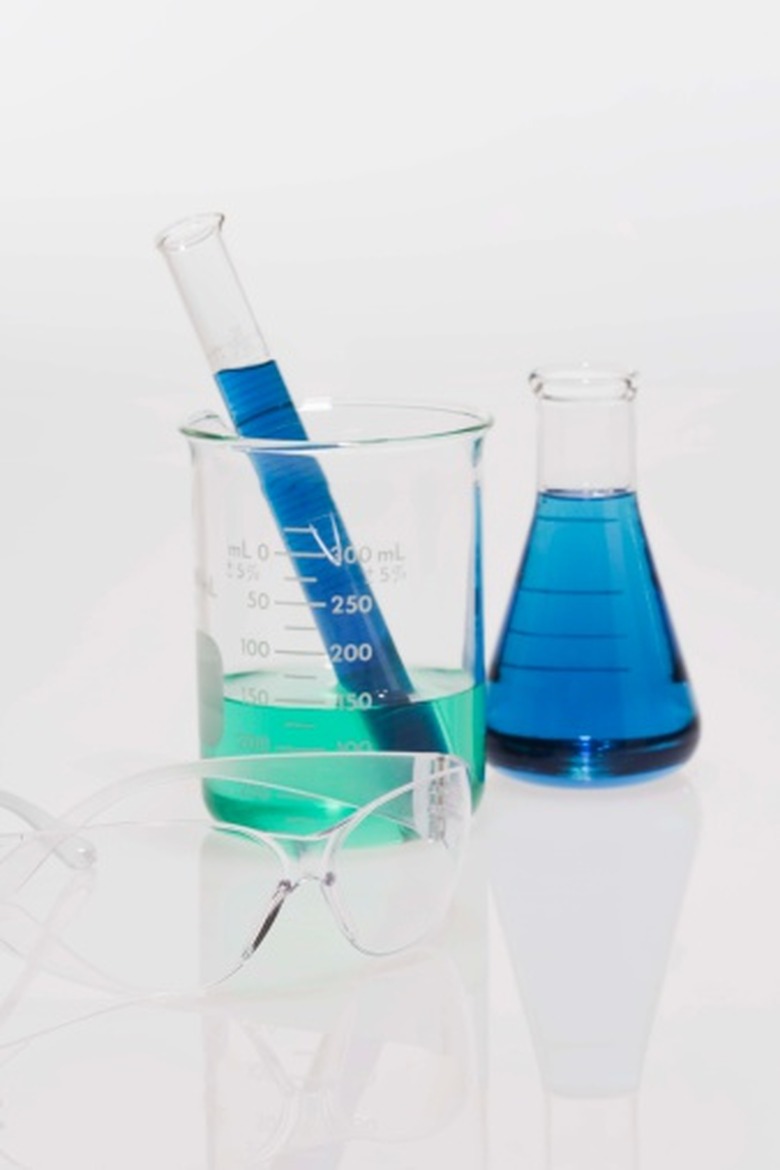How To Calculate Q Of Reaction
Every chemistry student knows Le Chatelier's principle, which states that any change in temperature, pressure, volume or concentration in a given system will lead the system to establish a new equilibrium state. With knowledge of the reaction (for example, whether it is endothermic or exothermic), you can use this to predict what will happen when there is a change imposed on the system.
But there is a more quantitative method you can use to determine which direction a reaction will favor, and whether or not it's currently at equilibrium, and this is called the reaction quotient. Learning to calculate the reaction quotient for a given reaction is a simple but powerful tool in chemistry.
The Reaction Quotient Explained
The Reaction Quotient Explained
The reaction quotient is a way of quantifying the relative amounts of reactants and products for a reversible reaction at any point in time. It is given the symbol **Q**, and you can calculate it using a simple formula involving the concentrations (technically the "activities") of the products and the reactants, along with their stoichiometric constants.
The reaction quotient and equilibrium constant (K) are similar (but not identical) quantities, and comparing the two at any given point in time tells you which direction the reaction will proceed in until it reaches equilibrium.
The Difference Between Q and K
The Difference Between Q and K
The equations for Q and K are very similar, depending on the concentrations of reactants and products, but there is a crucial difference between the two quantities: The equilibrium constant equation is only valid when the system is at equilibrium (i.e. when the rate of the forward reaction matches the rate of the reverse reaction).
The reaction quotient is valid at all times, so the reaction doesn't have to be at equilibrium for you to calculate it. However, when the reaction is at equilibrium, Q = K, and the two equations give the same result.
Calculate Q for a Reaction
Calculate Q
for a Reaction
The equation for Q, for a general reaction between chemicals A, B, C and D of the form:
\(aA + bB \leftrightharpoons cC + dD\)
Is given by:
\(Q = \frac{[C]^c[D]^d}{[A]^a[B]^b}\)
So essentially it's the products multiplied together divided by the reactants multiplied together, each raised to a power equal to their stoichiometric constants (i.e. the numbers of each component in the reaction). However, it's important to note that the square brackets in this refer to the activities of the chemicals.
For a solid or a pure liquid, the term in the equation for Q works out to one, and so they can be effectively ignored. For a solvent, you use the mole fraction, for a gas you use the partial pressure (or molarity), and for a solute you use the molarity.
A simple example calculation will give you a feel for how to calculate Q for a reaction. Take the reaction:
\(\text{CO (g)} + \text{H}_2\text{O (g)} \leftrightharpoons \text{CO}_2 \text{(g)} + \text{H}_2 \text{(g)}\)
With the molarities: [CO] = 1 M, [H2O] = 1 M, [CO2] = 2M and [H2] = 2 M, and the equilibrium constant K = 1. Note that the stoichiometric constants for each of the components in this case are one, so you don't need to worry about powers in the calculation. Using the expression for Q gives:
\(\begin{aligned}\)
\(Q &= \frac{\text{[CO}_2\text{][H}_2]}{\text{[CO][H}_2]}\)
\(&= \frac{2 × 2}{1 × 1}\)
\(&= 4\)
\(\end{aligned}\)
Note that this value for Q is larger than the given value for K.
Interpreting Q
Interpreting Q
There are three main cases to consider to understand what the value of Q tells you: Q > K, Q = K and Q < K. For Q > K, this means there are more products present than there would be at equilibrium, and so the reaction will shift in favor of the reactants.
For Q = K, the reaction is at equilibrium and will remain so unless something disturbs the system (e.g. if heat is added or the pressure increased).
For Q < K, there are more reactants than products present than at equilibrium, and so the reaction will proceed in the forward direction and favor the formation of products.
References
- Lumen Learning: Reaction Quotients
- Lumen Learning: Le Chatelier's Principle
- Khan Academy: The Equilibrium Constant K
- Missouri University of Science and Technology: The Reaction Quotient and the Equilibrium Constant
- LibreTexts Chemistry: The Reaction Quotient
- Khan Academy: The Reaction Quotient Q
- Purdue University: Calculating the Reaction Quotient, Q
Cite This Article
MLA
Johnson, Lee. "How To Calculate Q Of Reaction" sciencing.com, https://www.sciencing.com/calculate-reaction-8179296/. 30 March 2020.
APA
Johnson, Lee. (2020, March 30). How To Calculate Q Of Reaction. sciencing.com. Retrieved from https://www.sciencing.com/calculate-reaction-8179296/
Chicago
Johnson, Lee. How To Calculate Q Of Reaction last modified August 30, 2022. https://www.sciencing.com/calculate-reaction-8179296/
